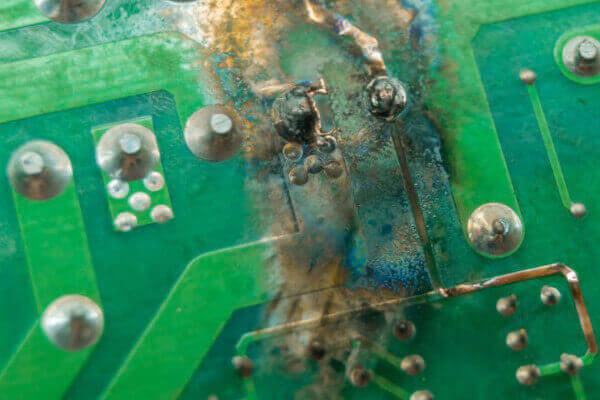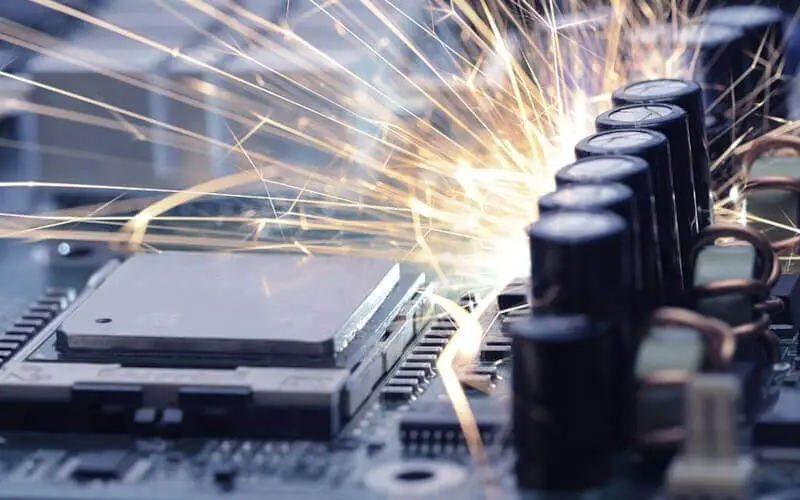Have you ever noticed your computer or phone slowing down unexpectedly? Or perhaps your laptop’s fan kicks into high gear, making a loud noise? Well, you might be experiencing something called thermal throttling.
Thermal throttling is a mechanism that helps prevent a device from overheating and causing damage to its components.
In this article, we’ll dive into thermal throttling, how it works, and its impact on your device’s performance. We’ll also explore some examples of devices with thermal throttling and share some tips on preventing and mitigating it.
Let’s get started.
What Causes Thermal Throttling?
So, what exactly causes thermal throttling? Well, it all comes down to one thing: heat. When a device’s components generate heat, they can reach temperatures too high to operate safely and effectively. This can happen for a variety of reasons.
For example, suppose you’re running intensive programs like video editing software or playing graphics-intensive games. In that case, your computer or phone’s processor may start working harder, generating more heat.
Another common cause of thermal throttling is an inadequate cooling system. If your device’s fan isn’t working properly or there isn’t enough ventilation, heat can build up quickly and cause components to overheat.
In addition, inefficient airflow within a device can also contribute to thermal throttling. For example, if too many components are crammed into a small space without proper ventilation, heat can’t escape as easily, leading to higher temperatures and potential throttling.
There are a variety of factors that can cause thermal throttling, but they all boil down to heat management. If your device cannot effectively dissipate heat, it may need to activate thermal throttling to prevent damage to its components.
How Does Thermal Throttling Work?
So, you might be wondering, how exactly does thermal throttling work? When a device’s components start generating too much heat, the device will activate thermal throttling to reduce the heat produced. There are a few different ways that this can happen.
First, the device may reduce the processor’s speed. The processor is responsible for carrying out tasks on your device, generating heat when working hard.
By slowing down the processor, the device can reduce the heat produced and prevent the processor from overheating.
In addition to reducing the processor’s speed, the device may limit power consumption. This means that the device will use less energy overall, which can help to reduce heat output.
For example, if you’re playing a game that uses many resources, the device may reduce the screen’s brightness or turn off other non-essential features to conserve power and reduce heat output.
Once the device’s temperature has lowered to a safe level, it will restore normal operation. This means the processor speed and power consumption will return to normal, and the device will resume its usual performance.
Thermal throttling is a way for devices to regulate their temperature and prevent damage to their components. By reducing processor speed and limiting power consumption, devices can effectively manage heat output and keep their components running smoothly.
Examples Of Devices With Thermal Throttling
Many modern devices use thermal throttling to help manage heat and prevent damage to their components. Some common examples of devices with thermal throttling include laptops and desktops, mobile devices like smartphones and tablets, and gaming consoles.
If you’ve ever used a laptop or desktop for an extended period, you’ve probably heard the fan kick into high gear at some point. This indicates that the device uses thermal throttling to manage heat and prevent overheating.
Mobile devices like smartphones and tablets also use thermal throttling, especially when running intensive apps like games or video editing software.
Gaming consoles are another example of devices that use thermal throttling.
Because games often require a lot of resources and can generate heat, consoles like the Xbox and PlayStation use thermal management systems to keep their components cool and prevent damage.
Some games are specifically designed to take advantage of a console’s thermal management system, allowing them to push the hardware to its limits without causing overheating.
Thermal throttling is a common feature in many modern devices, and it plays an important role in keeping those devices running smoothly and preventing damage to their components.
The Impact Of Thermal Throttling

While thermal throttling can be a helpful mechanism for preventing damage to a device’s components, it can also have an impact on performance. When a device is thermal throttling, it’s effectively reducing the speed and power of its components to manage heat.
This means that your device may not perform as well as it would under normal conditions.
For example, if you’re playing a game on your laptop using many resources, you may notice that the game starts to lag or become choppy. This could be a sign that your laptop is using thermal throttling to manage heat and reduce the processor’s performance.
In addition to reduced performance, thermal throttling can also impact battery life. When a device uses thermal throttling, it often uses more energy to manage heat and keep the components running smoothly.
Your battery may drain faster than it would under normal conditions.
The impact of thermal throttling on your device will depend on the specific circumstances. Sometimes, you may not even notice that your device is using thermal throttling.
But in other cases, you may experience reduced performance or shorter battery life. To minimize the impact of thermal throttling, it’s important to keep your device cool and well-ventilated and to avoid running too many intensive programs at once.
Prevention And Mitigation Of Thermal Throttling
While thermal throttling is an important feature for managing heat and preventing damage to your device’s components, it’s always best to avoid it if possible.
Here are a few tips for preventing and mitigating thermal throttling:
- Keep your device cool: One of the most effective ways to avoid thermal throttling is to keep your device cool. Ensure your device has plenty of ventilation and airflow, and avoid using it on soft surfaces like blankets or pillows, which can block the vents.
- Reduce the workload: If your device runs too many intensive programs simultaneously, it may overheat and use thermal throttling to manage heat. Try closing some programs or reducing the workload to help your device run more smoothly.
- Monitor your device’s temperature: Many devices come with built-in temperature monitoring tools to help you monitor the temperature of your device’s components. If you notice that the temperature is getting too high, take a break from using your device or try some of the other mitigation techniques listed here.
- Clean your device’s vents and fans: Over time, dust and debris can accumulate in it, which can block airflow and cause it to overheat. Make sure to clean your device’s vents and fans regularly to prevent this from happening.
Thermal throttling is an essential mechanism for managing heat and preventing damage to your device’s components. But by following these tips, you can help prevent and mitigate thermal throttling and keep your device running smoothly.
Conclusion
Thermal throttling is an important mechanism for managing heat and preventing damage to your device’s components. By slowing down the speed and power of the components, thermal throttling helps keep your device cool and prevents overheating.
While thermal throttling is a helpful feature, it can also impact performance and battery life.
To prevent and mitigate thermal throttling, it’s important to keep your device cool and well-ventilated, reduce the workload when possible, monitor your device’s temperature, and clean your device’s vents and fans regularly.
Following these tips can help prevent overheating and keep your device running smoothly.
Whether you’re using a laptop, desktop, mobile device, or gaming console, understanding how thermal throttling works and how to prevent it can help you get the most out of your device while protecting it from damage.






